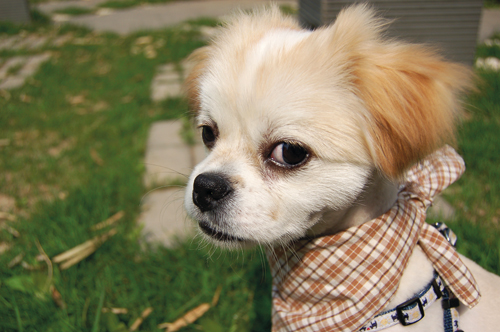
The following article is excerpted from beijingkids Home and Relocation Guide 2011. Download a PDF copy here or visit this page to order a free print copy for home delivery.
When it comes time to leave China, you shouldn’t have to leave your pets behind. With the proper preparation, soon enough you and your pet will be frolicking in the fields of your new home. Departing with your pets is a two-part process. The first step is exiting China, the second is entering your destination country. The exit process for China has three simple steps, while the entry process is dependent on your destination. Depending on the level of difficulty, the entry process requires at least six months of preparation. For up-to-date entry requirements, consult the embassy, department of agriculture or quarantine bureau of the country to which your pets are relocating. The following information should be used as a guide only, as rules and regulations for exporting pets are subject to change.
Exit requirements for China (from Beijing)
Rabies vaccination certificate
You will need an official PRC rabies immunity certificate, certifying that your pet was vaccinated at least 30 days – but not more than 12 months – prior to departure. Owners in China are required by law to vaccinate their dogs against rabies annually (it is recommended for cats). Two- or three-year rabies vaccines from other countries are not recognizedby China. Vaccinate your pet against rabies at an official animal vaccination hospital in China, such as International Center for Veterinary Services (ICVS) or the Guan Shang Animal Hospital (Chinese-speaking staff only), where owners receive the official Beijing Animal Health and Immunity Certificate (北京市动物健康免疫证).
Health certificate
After receiving the Beijing Animal Health and Immunity Certificate (a little red book), owners must schedule an appointment at the Entry-Exit Inspection & Quarantine Bureau animal hospital, known as the Guan Shang Animal Hospital (北京观赏动物医院). Pets must be examined no less than seven days prior to departure date. The animal hospital does not make appointments, so arrive as early in the day as possible; we recommend arriving at 8am. Owners should bring the pet, the red book with valid vaccinations, their passport (one person’s passport per pet) and cash (around RMB 600 per pet). Those not proficient in Mandarin should bring a Chinese-speaking friend to help. Pets are subject to a brief examination that may include blood tests and stool checks – owners are charged for this examination. After the examination, your pet will be issued a Beijing International Companion Animal Health Inspection Certificate (动物卫生证书), which is valid for seven days. Immediately exchange it for the official Animal Health Certificate for Exit (出境通关单). If it is not processed before the expiration date, the health exam must be repeated.
Exit permit
Owners must present the health certificate to obtain the official Animal Health Certificate for Exit (出境通关单), also known as the exit permit. This can be done at the Entry-Exit Inspection and Quarantine Bureau office, located on the second floor of the Guan Shang Animal Hospital. While the animal hospital is usually open during national holidays, the Entry-Exit office is typically closed during holidays. Owners need to bring their pet’s red vaccination book and health certificate, as well as their own passport. For this step, it is not necessary to bring your pet. The exit permit fee is around RMB 100, typically processed within two business days and is valid for fourteen days from date of issuance. Latest regulations must be confirmed with the quarantine bureau, because policies may change at anytime without notice. Pet owners with an exit permit have 14 days to take their pets out of China. Note: China has no quarantine requirement for pets departing China.
Entry requirements for destination countries
The second process is fulfilling the entry requirements for the destination country. Depending on the country, the entry process may be very simple or extremely difficult. Either way, it’s best to prepare everything well in advance of your departure date, usually six months or more – especially if you’re moving to a country with strict quarantine regulations, like Australia or New Zealand. The informationbelow should be used for reference only. For the latest pet import requirements, contact the embassy, department of agriculture or quarantine bureau of your destination country.
US (excluding Hawaii) and Canada
Difficulty: Easy
• Rabies vaccination required at least 30 days, maximum of 12 months before entry.
• No microchipping required.
• No rabies antibody titer testing required.
• No quarantine if rabies vaccination requirement is met.
• Regulations for pets being imported into Hawaii differ from the continental US. For the most up-to-date Hawaiian regulations, visit the USDA or Centers for Disease Control and Prevention (CDC) websites, or contact ICVS.
European Union countries and Japan
Difficulty: Moderate
• Rabies vaccination and rabies antibody titer test required. Test must be done at least three months and a maximum of six months before the pet arrives.
• Microchipping and/or tattoo required (dependent on country’s requirements).
• No quarantine if the above requirements are fulfilled.
• Japan requires two rabies vaccinations within six months of arrival.
• The UK has a mandatory six-month quarantine for animals from China.
Hong Kong
Difficulty: Moderate
• Microchipping required.
• No rabies antibody titer testing required.
• Mandatory four-month quarantine for all pets from China.
Australia, New Zealand and Taiwan
Difficulty: Hard
• Microchipping required.
• Rabies and other vaccinations required.
• Rabies antibody titer testing required.
• Animals cannot be directly imported. Animals from China must first reside in a "rabies-free" country for at least six months. Approved countries for Australia and New Zealand include the US, Canada, Singapore, Hong Kong, Japan and some EU countries.
• Upon arrival in Australia/New Zealand/Taiwan, there is a 30-day quarantine.
Microchipping
Beijing authorities do not require microchipping of animals. Countries and regions that require microchipping include – but are not limitedto – Hong Kong, Taiwan, Singapore, Malaysia, Japan, Australia, New Zealand and the European Union. As of 2011, the EU requires microchipping to be done before or on the same date as the rabies vaccination documented for the rabies antibody titer test.
ISO-compliant and EU-approved microchips are available for sale in Beijing by Globy Pet Relocation company. Insertion is a surgical procedure that must be managed by a veterinarian. ICVS provides microchip insertion services and has a scanner to detect microchips. They also scan microchipped pets free of charge, to help the owner ensure the chip is readable and in good working order.
Rabies vaccination
A rabies vaccination must be performed at a legally designated animal vaccination hospital in China, such as International Center for Veterinary Services (ICVS). If legally registered by the Chinese government to provide rabies vaccinations, the hospital will have a large gold plaque with Chinese characters that reads: 动物狂犬病免疫注射定点单位.
For pets that require the rabies antibody titer test, a rabies vaccination must be done at least 30 days before blood is drawn for the antibody test.
Rabies antibody titer testing
Rabies antibody titer testing is required upon entry into all European Union countries.
Typically, the requirement is that the pet is vaccinated for rabies at least four to seven months prior to departure. EU countries require that the blood sample be drawn at least three to six months before the pet’s arrival date in the EU. Pets going to the EU must be also microchipped on or before the rabies vaccination date. A month after the vaccination (and no sooner), a sample of the pet’s blood, along with separated serum is prepared at a hospital in Beijing (ICVS can assist with this process) before it is taken to the EU the followingday to be tested by an official EU-authorized laboratory for the rabies antibody titer test. Currently, China has no EU-authorized labs. Owners must have the proper form: EU CE 998/2003 for European Community for non-commercial movement of pet animals. It can be obtained from an EU-authorized laboratory or downloaded online (www.douane.gouv.fr/data/file/6113.pdf). The form must be filled in by a Chinese vet at Guan Shang Animal Hospital and will be checked by customs at the airport in the EU. Visit www.ec.europa.eu/food/animal/approved_establishments/laboratories_en.htm for a list of authorizedlaboratories in the EU. Most EU countries require a 90-day wait after the blood is drawn, for the pet to enter the EU, but it is best confirmed with the EU-authorized lab. For assistance in transporting the serum sample to the EU, contact Globy Pet Relocation.
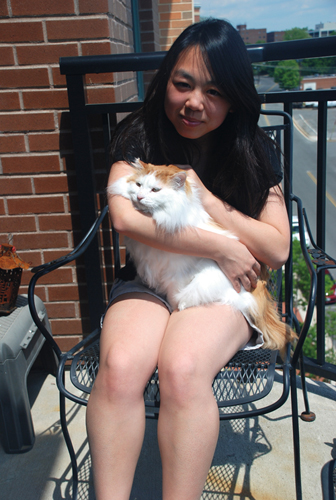 Algebra
Algebra
Type: Cat (9 years old)
Owner: Joi Chu-Ketterer
Destination: Virginia, US
Date of relocation: June 2010
Cost: RMB 800 (pre-departure paperwork and exams), USD 250 (shipping the medium-sized dog crate). There was no extra charge for the cat, as it was considered a carry-on item.
Airline: United Airlines
Relocation service: None
Joi Chu-Ketterer’s mom and her mom’s assistant handled most of the process – which was made easier as they were with an embassy. ICVS was also very helpful, providing guidelines for the process. They started with a medical exam at ICVS about a month before their departure. At the same time, they made sure health records for Algebra (Al) received the official chop (red stamp). About two weeks before leaving, Chu-Ketterer went to the Guan Shang Animal Hospital. Owners should exercise caution at the hospital, as sick animals are treated there and sometimes roam around, uncaged and unleashed.
It cost RMB 10 to get a number, then RMB 100 to get the examinationform, another RMB 100 to get the animal’s picture taken and finally another RMB 100 to pick up the completed form the next day at the China Entry-Exit Inspection and Quarantine Bureau. Chu-Ketterer spent less than two hours in total at both the animal hospital and the bureau. The piece of paper from the hospital is very important, so don’t accidentally pack or lose it.
United Airlines knew exactly what to do and were expecting Chu-Ketterer when she showed up at the airport with Al. Space for animals on airplanes is limited, especially in the cabin, so it is important to book a space early and keep double-checking to confirm. Chu-Ketterer opted to bring Al as carry-on and not excess checked baggage. Despite having an airline-approved animal crate, Chu-Ketterer ended up bringing Al on board in a Sherpa bag. He remained in the bag for the entire 14-hour flight, as Chu-Ketterer fed her ice chips. The flight and arrival at Dulles International Airport in Washington, DC was a breeze.
One major difficulty was when security at Beijing Airport put the cat through the X-ray machine. Chu-Ketterer tried to reason with them, but they insisted and put Al through anyway.
Advice: Start early! The process takes a lot of time and patience. Keep double-checking everything to make sure that requirements do not change at the last minute. Be prepared to spend a lot of money.
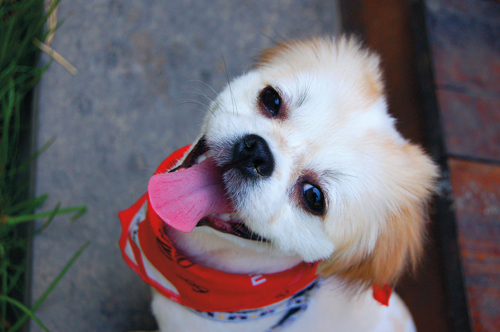 Brian and Socks
Brian and Socks
Type: Brian, dog (2 years old), Socks, cat (2 years old)
Owners: Shirley Han Ying and her husband Chris Gelken
Destination: Hong Kong
Date of relocation: July 2010
Relocation company: None. Han made inquiries with relocation services, but the cost of RMB 26,500 (RMB 12,000 plus the HKD 16,320 quarantine fee) was too high for her family.
Cost (for both dog and cat): Total of RMB 21,000. The breakdownis as follows: RMB 800 (two ISO microchips), RMB 120 (courier for application of Hong Kong import permits), RMB 1,040 (medical examination for dog and cat at Beijing Guan Shang Animal Hospital), RMB 200 (inspection fees for dog and cat at China Entry-Exit Inspectionand Quarantine Bureau), RMB 4,000 (airline fee), HKD 80 (dog license registration in Hong Kong), HKD 10,800 (dog quarantine fee in Hong Kong), HKD 5,520 (cat quarantine fee in Hong Kong), plus a couple of hundred HKD in pickup fees at the HK airport.
Airline: Cathay Pacific Airways
Airline fee: Total was RMB 4,000. The breakdown is as follows: RMB 40/kg for parts under 45kg, RMB 43.5/kg for parts over 45kg (shipping fee that included weight of crates), RMB 300/shipment (inspection fee for live animals), RMB 600/shipment (customs declaration fee), RMB 800/shipment (operation fee), RMB 200/shipment (storage fee). The dog and cat together constituted one shipment.
Originally, Shirley Han Ying and her husband planned to take the cat and dog to Hong Kong in June. But when applying for the import permits with the Hong Kong Agriculture, Fisheries and Conservation Department in early May 2010, Han was told there would be no quarantine space available until mid-July. So she had to delay her departure, flying to Hong Kong in July of 2010 instead.
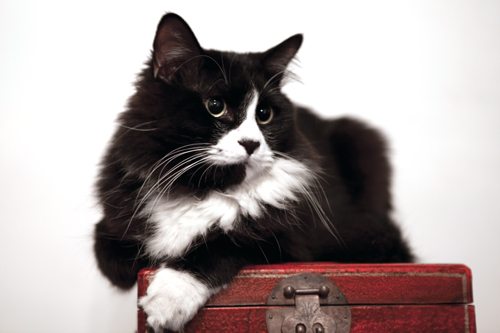 Han started researching and preparing about three months prior to departure. First, the pets were microchipped at ICVS. China currently only offers ISO microchips, which don’t meet Hong Kong’s requirement for AVID microchips. So the ISO chips were purely for transportation purposes. Once in Hong Kong, the pets needed to be chipped again with AVID microchips.
Han started researching and preparing about three months prior to departure. First, the pets were microchipped at ICVS. China currently only offers ISO microchips, which don’t meet Hong Kong’s requirement for AVID microchips. So the ISO chips were purely for transportation purposes. Once in Hong Kong, the pets needed to be chipped again with AVID microchips.
Han checked with her pet’s local veterinarian at Baolaifu Animal Hospital to make sure all the information and vaccination history was written clearly on the Beijing Animal Health and Immunity Certificate. The serial number of the ISO microchips should be affixed onto the last page of the certificate. Then, she brought a letter from the veterinarianto the Chaoyang District Center for Animal Disease Control to add another bureau chop to the health certificates.
The next step was calling the Hong Kong Agriculture, Fisheries and Conservation Department (+852 2150 7065) to confirm the required documents for import permit application. Once confirmed, Han sent all of the files by courier to get two quarantine kennels reserved as soon as possible. Ideally, the application should be filed three months prior to the expected departure date.
Once the AFCD receives the documents, they will send e-mail confirmation after about five working days with a suggested import period. The owner will need to email the authority back to confirm the exact import date. Then, it will take another two to three weeks to mail the import permit to the owner.
AFCD says the animals must be transported by the fastest and most direct route from the exporting country to or through Hong Kong as "manifested cargo." This means the owner needs to book a direct flight from Beijing to Hong Kong for the pets with the cargo department (not the regular passenger ticketing) of the airline.
In July 2010, only Cathay Pacific Cargo and Air China Cargo would transport live animals. Han chose Cathay Cargo (5905 7714). They briefed her on the procedure and required documents for exporting pets. They also asked her to email Cathay and their clearance agency with the scanned copies of required documents and photos of the pets in their air crates. The crates needed to be spacious enough for the pet to turn around in, have attached food bowls and water dishes, a handle on top, and be lined with a towel to absorb any "accidents."
Around 14 days before the departure date, Han took both the dog and cat to Guan Shang Animal Hospital for the required medical examinations.The medical results were issued three working days later. Then she brought the results to China Entry-Exit Inspection and Quarantine Bureau on the second floor to apply for the official health certificate and an export clearance document. She picked up the documents for both pets two days later. She emailed scanned copies of all the documents to Cathay Cargo and they confirmed receipt of them.
Next, Han called the duty officer of Import/Export department at Hong Kong Airport (+852 2652 5296) to notify them of the anticipated arrival time of her pets. She was also required to arrange a vehicle in Hong Kong, so an AFCD officer could accompany both Han and her pets to the Hong Kong Animal Management Center for quarantine.
The morning before the departure date, she was required to take her dog and cat to the BGS Cargo Terminal (Rm 221 for Cathay Cargo, 6459 7100) on Airport Huoyun Lu to check the animals in with the airline and go through China Customs. After clearance, agency staff sealed the animal crates and the animals were taken to the storage waiting area for boarding the next morning. The entire process that day took about six hours and cost RMB 4,000.
Flying Cathay Pacific wasn’t as good as Han expected. Because of the overnight stay, the pets remained in their crates for a long period of time (with no one to clean them) and as a result, sat in their own urine and feces for the whole journey.
Han and her husband flew on the same flight as their pets. After landing in Hong Kong, they went to the cargo terminal together to pick up the animals. The dog and cat had to go through license registration, rabies vaccinations, as well as AVID microchip injection. Then, an AFCD officer accompanied them to the quarantine center.
The quarantine center in Pok Fu Lam is very basic. All dogs stay in open-door kennels, unprotected from the hot and humid Hong Kong weather. Also, dogs only get 15 minutes of activity time each day. Treatment for the cat was much better. Socks was kept in an air-conditioned room with cat furniture. But at the end of quarantine, the cat had fur knots, which were painful to remove.
Han was permitted to see her pets during quarantine and there were no big changes in their behavior after quarantine. The dog adapted to the new home after about a week. The cat had a harder time, taking two to three weeks to settle down.
Tips: Make sure you double-check all your documents and have them handy. You also need a few hundred Hong Kong dollars to pay for fees when picking up your pets at the cargo terminal.
Bring a lot of wet and dry tissues with you, because after landing you will need to clean the air crates and your pets’ feet, which will probably be covered with urine and feces. Animals under stress are likely to have "accidents."
Bring a leash to walk your pet in the quarantine center. Also don’t forget to carry your pet’s favorite toys, so they will have something familiar with them while in quarantine.
Always make telephone inquiries first and make an appointment if possible. It’s better to take an early morning flight, as they tend to be shorter. And if your pets arrive at the Hong Kong airport after the AFCD office hours, the animals will have to be quarantined at the airport at your own expense with more paperwork.
If you can afford it, hire a relocation service. Doing it yourself is a hair-pulling experience. But if you don’t have the budget, be patient, and with effort, everything will work out in the end.
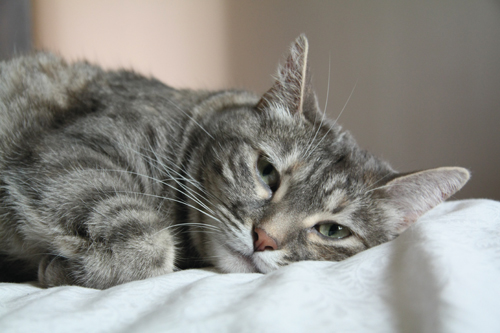 Pompom and Peanuts
Pompom and Peanuts
Type: Pompom, cat (7 years old), Peanuts, cat (2 years old)
Owner: Stephanie Levert
Date of relocation: December 2010
Destination: Toulouse, France
Airline: Lufthansa German Airlines
Relocation company: None
Cost: About RMB 3,000 (airline "extra weight" charge), RMB 1,500 (microchips), RMB 500 (vaccinations), RMB 500 (blood sample and serum preparation), EUR 155 (antibody titer test in the French laboratory).
The key to moving a pet to the EU is to start at least four to six months before your pet’s departure date. With her departure planned for December 2010, Levert contacted ICVS in May (seven months prior to departure) and attended an ICVS "Departing from China with Pets" awareness session. For Pompom, who was born in France, the process was slightly easier than for Peanuts, a Chinese stray found on the street. Pompom already had a European passport, a Chinese red vaccination book, a microchip and an up-to-date rabies vaccination. This was not the case for Peanuts. After buying an EU-approved microchip from Globy Pet Relocation, Peanuts was implanted with the chip at ICVS. Then the cat needed a vaccination and an official red vaccination book. This was done more than six months prior to departure.
The next stage was preparing the antibody titer testing for both cats. There are no EU-authorized labs in China, so the day after the blood was taken Levert flew to an EU-authorized lab in France. ICVS clinic gave her two samples per cat. She carried the well-packaged samples (with ice and insulation) through various airports without any complications. Along with the lab results, the lab in France gave them a veterinary certificate for domestic dogs and cats entering the EU – to be filled in by a Chinese vet at Guan Shang Animal Hospital.
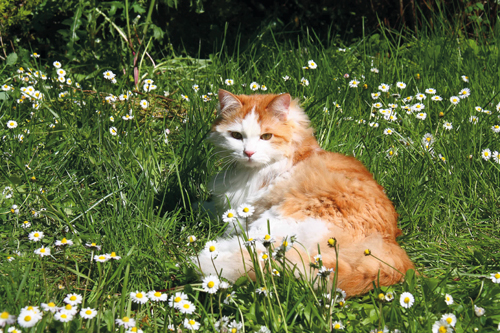 After receiving the results of the titre test by snail mail and email (a back-up was also sent to ICVS), Levert began the Chinese exit process. She took the cats to the Guan Shang Animal Hospital within seven days of their departure for a health exam. She also had them stamp and update the EU CE 998/2003 form. Then she received exit permits for both cats.
After receiving the results of the titre test by snail mail and email (a back-up was also sent to ICVS), Levert began the Chinese exit process. She took the cats to the Guan Shang Animal Hospital within seven days of their departure for a health exam. She also had them stamp and update the EU CE 998/2003 form. Then she received exit permits for both cats.
Levert discovered each airline had their own policy that differed on carrier size, weight, and number of pets allowed in the cabin. She finally selected Lufthansa as they allowed her and her husband to fly with two cats in the cabin, in accordance with one pet per passport. Lufthansa needs to know the precise size of the pet carrier and at the time, accepted up to 7kg (carrier included) on board – they will check the weight and size on the day of the departure.
Upon arrival at the Frankfurt Airport, the EU CE 998/2003 form was the only document checked by customs. A month after arrival in the EU, Peanuts’ microchip was entered into the French database.
Tips: If your pet is unaccustomed to traveling, ask your vet about sedation options (which should never be done without permission from a licensed veterinarian) or try natural medicines to help your pet. ICVS can provide a homeopathic calming remedy called Serene UM, which is taken three days prior to traveling and can keep pets calm during travel. Levert also recommends contacting ICVS, whose kind and professional assistance helped ease the process.
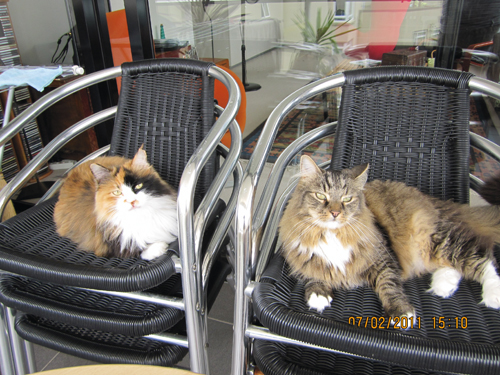 Huali
Huali
Pet: Cat (5 years old)
Owner: Ros Rath
Destination: Sydney, Australia
Cost: RMB 40,000
Relocation company: Globy Pet Relocation
Airline: The first flight was from Beijing to Hong Kong was with Dragon Air. The flight from Hong Kong to Sydney was with Cathay Pacific.
Date of relocation: Huali left Beijng in June 2010, arrived in Sydney in December 2010 and settled into her new home in January 2011.
When she found out she would be moving back to Sydney (about three months prior to her departure), Ros Rath contacted ICVS to learn about the pet relocation requirements. Rath then hired Globy Pet Relocations and made a booking with the quarantine center in Hong Kong, as well as the boarding facility. About one month before departure, Huali was microchipped. Ten days before departure, Globy Pet took Rath and Huali to the Guan Shang Animal Hospital for a health check. On the day of departure, Globy Pet picked up the cat, taking her to the airport. Rath followed soon after, going through customs with her passport and paperwork for the cat.
Globy Pet handled most of the Beijing prodcedure and paperwork. However, dealing with the Hong Kong leg of the trip was very difficult and lasted six months. Upon arrival in Hong Kong, there was a problem: Huali’s microchip number was not on her paperwork. Until her identification was sorted by the pet relocation company and the Hong Kong agent, the cat had to stay at a pet hostel (as the Hong Kong agent called it) at the Hong Kong airport before it could be moved to quarantine.
The quarantine in Hong Kong was good and Huali was well cared for. However, the cat did lose a fair amount of weight. Apparently, she did not like the food. The agent in Hong Kong promised to keep an eye on her and said she was happy and well, but only after arranging for better food did the cat’s health improve. A Chinese friend called the quarantine in Hong Kong regularly to check on the cat, because Rath didn’t trust the agent.
The quarantine center in Sydney was fantastic and Rath wasn’t worried. The handler seemed very caring and Rath was able to call her daily regarding the wellness of her pet. Rath was also able to visit her cat, beginning the second day, up to two times per week for half an hour each time, or once a week for one hour. After quarantine, the cat was shy for a day or two, but adjusted quickly to her new home with her new cat friend, Wally.
Tips: Check and double-check your paperwork, and make sure you write down the microchip number. It was an emotionally harrowing experience, but Rath knows it was worth it.
RESOURCES
International Center for Veterinary Services 北京新天地国际动物医院
Mon-Sat 8am-8pm, Sun 10am-7pm. 29 Liangmaqiao Lu, An Jia Lou, Chaoyang District (8456 1939/40/41, icvs_china@yahoo.com) www.icvsasia.com
朝阳区安家楼亮马桥路29号(肯特中心院内)
Guan Shang Animal Hospital 北京观赏动物医院
Daily 8.30am-10.30pm. 1/F, 7 North Third Ring Road (300 meters West of An Hua Qiao, on the north side of the street), Chaoyang District (6237 1359 ex 8037, 6205 1944 ext 8037 Chinese only)
朝阳区北三环中路7号1层(安华桥往西三百米路北)
Beijing Entry/Exit Inspection & Quarantine Bureau 北京出入境检验检疫局
Mon-Fri 8.30-11.30am, 1.30-4pm. 2/F, 7 North Third Ring Road (300 meters West of An Hua Qiao, on the north side of the street) (6204 9631, 6237 1359, callers should ask to be transferred)
北三环中路7号2层(安华桥往西三百米路北)
Baolaifu Animal Hospital 宝来富动物医院
Daily 9am-9pm. Inside the swimming venue (200m east of the south gate of Worker’s Stadium), Worker’s Stadium, Gongti Nanlu, Chaoyang District (6593 6074/6593 1344) 朝阳区工体南路工人体育馆游泳场(工体南门向东200米)
Pet Express (Asian Tigers)
Stephane Camguilhem, Beijing Manager (6415 1188 ext 160, stephane.camguilhem@asiantigers-china.com)
www.asiantigers-china.com
Globy Pet Relocation
Harriet Liu (8762 5020, 400 883 8011, beijing@globypetrelo.com) www.globypetrelo.com
World Care Pet Transport
Kiki Chen, pet and household goods specialist (8459 3008/2858, kiki.chen@worldcarepet.com.cn)
www.worldcarepet.com
Chaoyang District Center for Animal Disease Control 朝阳区动物疫病预防控制中心
Administration office: Daily 9am-9pm. 150m southwest of Chaoyang Gongyuan Qiao (6508 3873, 6500 2890) 朝阳公园桥西南150米.
Centers: 1) Daily 24 hours. 8A Tuanjiehu Beisantiao (8597 5507); 2) Daily 9am-9pm. Nongguang Nanli, Dongsanhuan Fulu, Chaoyang District (6735 8970); 3) Daily 9am-9pm. Nongguang Nanli, Dongsanhuan Fulu, Chaoyang District (6735 8970); 4) Daily 9am- 9pm. Nan Hejiafen, Shuangqiao, Chaoyang District (8536 1301)
1) 朝阳区团结湖北三条甲八号; 2) 朝阳区三环辅路农光南里; 3) 朝阳区三环辅路农光南里; 4) 朝阳区双桥南何家坟




2 Comments
Took two cats to USA November 2026, Beijing to USA. At all check points we removed cats from carriers and held them while going through metal detectors and the carriers went through the X-ray. I assume they have new safer protocols now than when the cat above went in 2010. Smooth process though there is a risk of escape at that time. A leash and tight collar for panicky cats would be a good idea.
Oops!! 2016 !! Typo